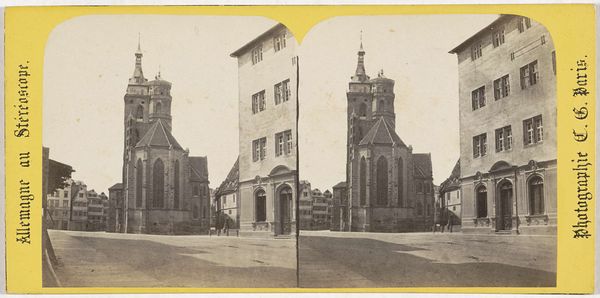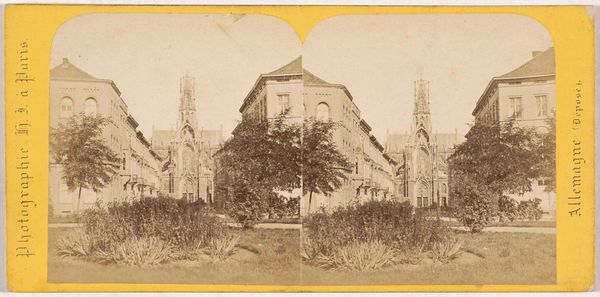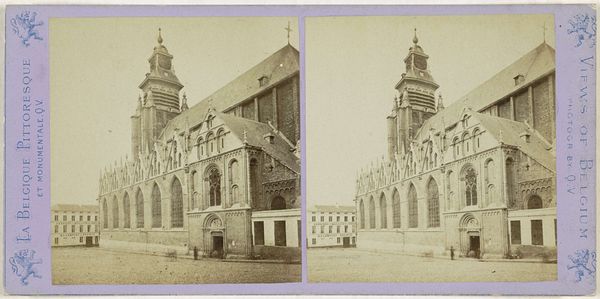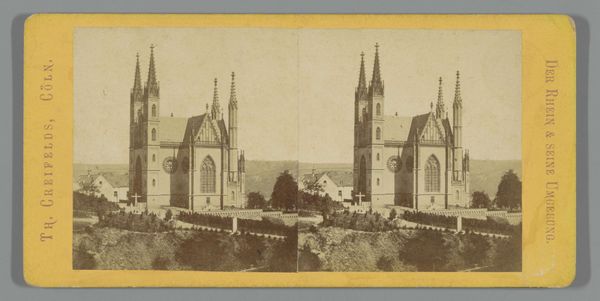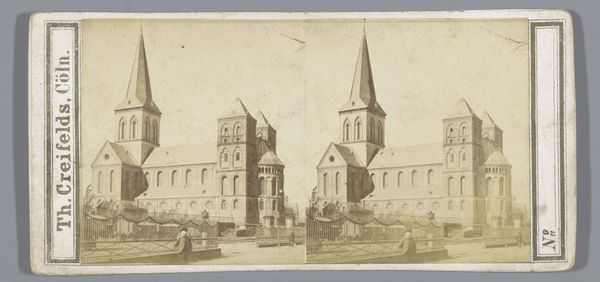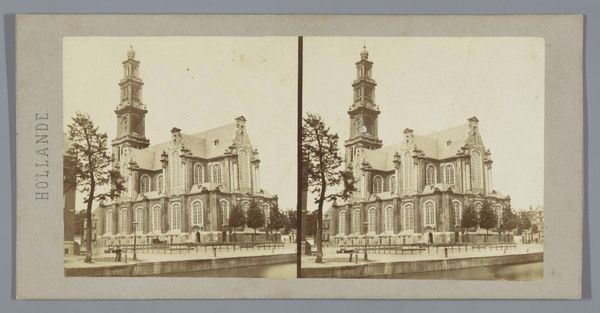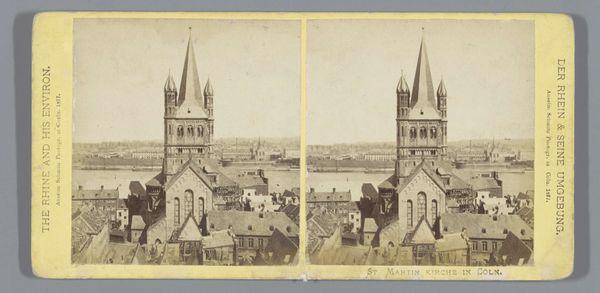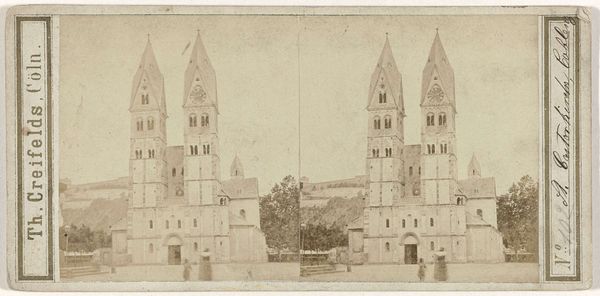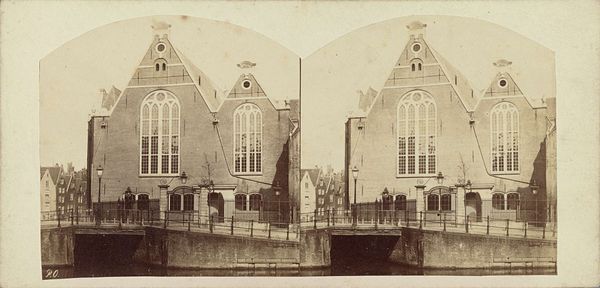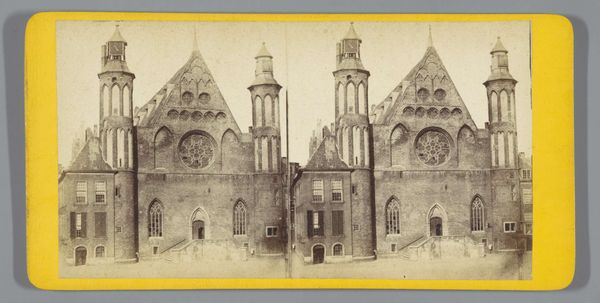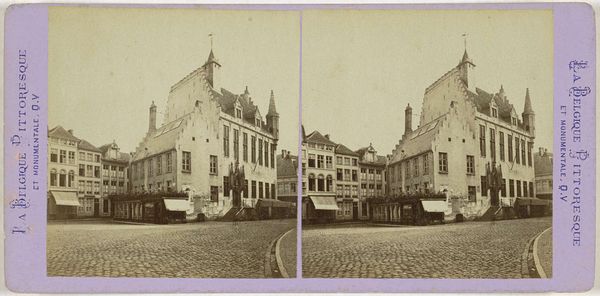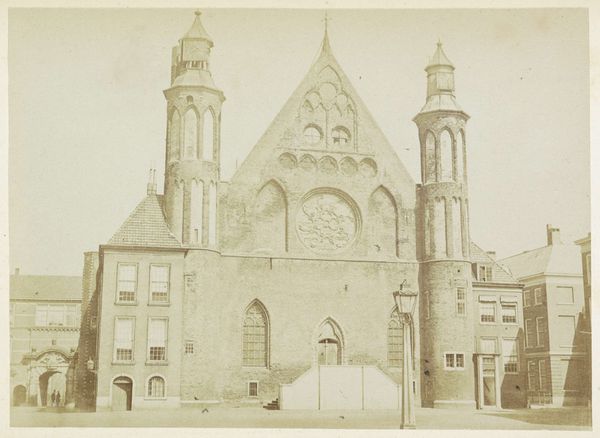
Dimensions: height 85 mm, width 174 mm
Copyright: Rijks Museum: Open Domain
Charles Gaudin created this stereoscopic photograph of the Catholic Church in Leipzig, Germany. This image offers insights into the social and cultural landscape of 19th-century Germany, where the church played a central role in community life and civic identity. Gaudin's choice to capture the church in this format speaks to the era's fascination with technology and its potential to document and disseminate images of significant landmarks. The stereoscopic effect, which creates a sense of depth and realism, adds to the image's appeal as a form of entertainment and education. The image itself prompts reflection on the relationship between religious institutions and the broader social and political context of the time. It invites us to consider the ways in which religious architecture and imagery were used to assert authority and inspire devotion. To understand the artwork better, resources such as historical archives, architectural studies, and religious history texts could be useful. By exploring these resources, we can gain a richer appreciation for the artwork's significance and its role in shaping cultural memory.
Comments
No comments
Be the first to comment and join the conversation on the ultimate creative platform.
